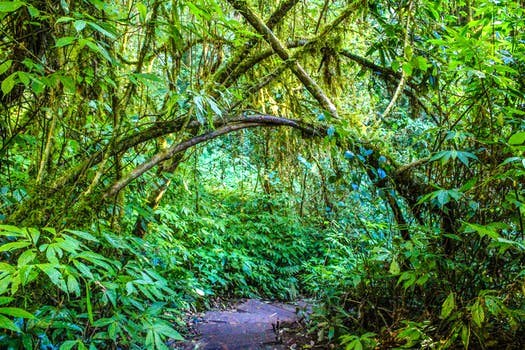“ One voice speaking truth is a greater force than fleets and armies, given time, plenty of time...” Ursula Le Guin 1969: The Left Hand of Darkness
"Whatever may happen in the bad times, the verbal arts, at least, tend to become very important. It’s really important what you say in the bad times.” Ursula Le Guin 2017: Conversations on Writing with David Naimon
Yet another kind of immortality can belong to the writer. Their words are preserved in small physical objects that circulate, are available and easily obtainable. Books provide the most accessible legacy. They are in so many forms and places--from new and used bookstores to thrift shops, bargain bins and free boxes, libraries and in the homes of friends. Now they are in digital form, and free on the Internet. They are much easier to find--and especially, to serendipitously stumble upon--than old films or TV shows, let alone the evanescence of performances. And they last.
There also seems to be something about the written word that can take time, to expand, to drop the reader into deeper levels, to open new eyes and ears beyond the writer's physical time. Writers can live in the lives of strangers long after they are dead, perhaps more than they did in life.
The first month of 2018 was not yet over before Ursula Le Guin died. No Time To Spare, her wonderful selection of online writing, especially for her blog, had been a Christmas hit in December. I bought it on Christmas Eve at Kepler's Bookstore in Menlo Park, California.
This Christmastime I returned to Kepler's and saw a special Le Guin endcap, with that book still featured, as well as collections of short stories, her last volume of poetry, and the collected Earthsea novels, plus a new book, Conversations on Writing, that consists of interviews she gave in 2017. This book suggests some of the reasons that Le Guin was and will remain a strong influence on other writers, and all kinds of writing.
In terms of her fictions, her particular gift of anthropological science fiction is likely to influence even more visions of the future, as that future is more and more shaped by climate and ecological crisis. Margaret Atwood notes that all the oppressive aspects of the future she imagines in her novel, The Handmaid's Tale, do happen in parts of the world or did happen in history. Many of the striking imaginings in Le Guin's novels are derived from Indigenous cultures of the past and present. Her insistence on cultural attributes that serve the Earth as well as humanity, and preserve a realistic relationship between them, will only grow in importance.
Three very different writers who died in 2018, Philip Roth, Neil Simon and Tom Wolfe, did much to illuminate American life in the 20th century, and in so doing, helped define our view of our own culture.
Roth in his meticulous fictions, in both his grim and hilarious modes, and Simon in his comic plays and screenplays, explored Jewish-American experience, and revealed much about both sides of the hyphen. They also transcended nationality, imagining their way into other sorts of lives. Because Neil Simon was so popular, his achievement is perhaps undervalued, particularly his screenplays, including a lesser known gem like Max Dugan Returns. Tom Wolfe on the other hand came from the WASP world, and was equally comfortable writing about the rich and famous, and the oddball outcasts. He attempted more consciously to define the culture he observed.
William Goldman was one of Hollywood's most celebrated screenwriters, but he also wrote three books that became classics in their fields. His Adventures in the Screen Trade is considered the best book on screenwriting and Hollywood, and his The Season: A Candid Look at Broadway is considered the best book on Broadway and American theatre. But his little self-conscious fairytale novel, The Princess Bride, was a word-of-mouth hit that's now a classic, and the movie made from it has its own, still-growing cult of admirers. I loved all three (or four, counting the movie.)
I remember watching a PBS documentary in the 1970s or early 80s on the new physics of the very large and the very small. I knew nothing about it, so I struggled to understand something about quarks with color and the four forces of the universe. The documentary culminated in speculation about a grand unified theory that would unite all the forces and all of physics. There was one man, the announcer said, who might do it. And the screen showed Steven Hawking, small and twisted in his wheelchair. This was before he used his now-famous voice synthesizer, and so the soundtrack included his speech, completely unintelligible to all but a few intimates. This was the greatest mind in science, in a body suffering a motor neuron disease. It was an extraordinary mind-boggling moment.
Hawkings never did come up with the theory (then again, neither did Einstein. Physicists today despair of its existence.) But he became a global presence, beginning with his international best seller, A Brief History of Time.
For a few summer days at a workshop in Colorado, I was a student of writer Harlan Ellison. It was 1969, when he was in his prime as enfant terrible, and was playing the part. He was mercurial at best, but conveyed the fundamental seriousness of writing. (He also liked my story.) Besides his own work ("A Boy and His Dog" was probably his most famous, and notorious) he edited two important anthologies in the late 60s and early 70s (Dangerous Visions and Again, Dangerous Visions) that introduced and defined what would be called the New Wave in science fiction. One of the authors he published was Ursula Le Guin.
Other well-known authors who died in 2018 were (most recently) Israeli novelist Amos Oz, V.S. Naipaul, Robert Bausch, poet Donald Hall, playwrights Maria Irene Fornes and Ntozake Shange. But there were also a few lesser-knowns who I discovered in serendipitous fashion. British philosopher Mary Midgely wrote boldly and sensibly and even heroically about evolution in particular. American philosopher Stanley Cavell was across the street at Harvard when I discovered his books on film at the Harvard Bookstore in the early 70s. I have a weakness for memoirs and histories of popular culture, so fairly recently I was pleased to discover Gerald Nachman's Raised on Radio.
One of the great American places for serendipity is the Strand Bookstore in New York, where in particular review copies go to live. Fred Bass, who made it so, died in 2018.
There's a more complete list of writers who died in 2018 over at Books In Heat. May all those mentioned in these memorial posts rest in peace. Their work lives on.
Howdy Doodle
-
It was four summers ago—nearly five—that Margaret drove the six hours or so
to the Bay Area, to an animal shelter that specialized in small dogs,
espe...
1 day ago





























































